I broke down a play from each team that I found interesting, you can check it out by clicking here.
There’s just something about Seahawks Vs Rams games. No matter how good or bad either team is, the game always seems to end up worth being talked about. This one was no exception, it was a back and forth battle, and both teams had a ton of success moving the football. Seattle averaged 7.04 yards per play, and Los Angeles averaged 7.55 yards per play. But there were a lot more numbers to get into that just that one, so let’s jump into it.
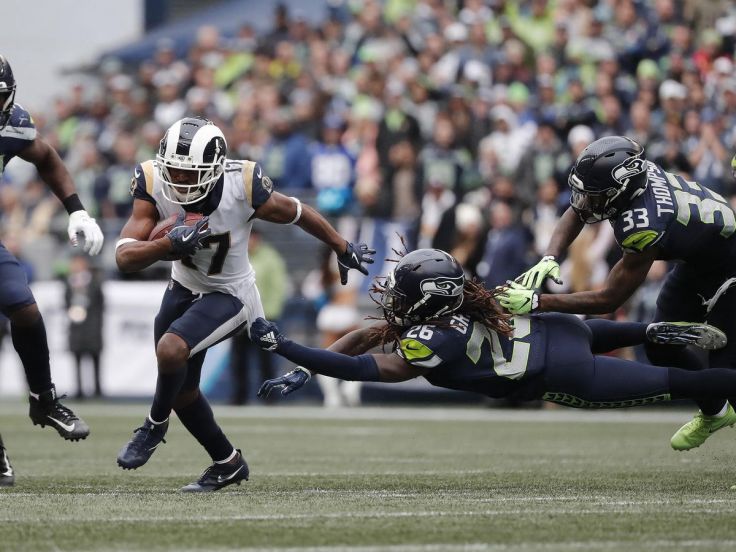
The first thing to mention when breaking down the Rams offensive personnel groupings is that they’re a tough team to break down. The offense they run is a very interesting one, they’ll put receivers in the game who will end up essentially playing tight end. They’ll also have running backs play receiver way more than most teams, and they have receivers play halfback as well. You pretty much have to be able to do everything to play on this Rams offense. So when breaking down which personnel they have on the field, I don’t focus on who’s playing which position, just which positions are being played. So for example if Los Angeles has a halfback and 4 receivers in the game, but one receiver is playing a tight end position, I count it as a standard personnel set (a set with 3 receivers a halfback and a tight end).
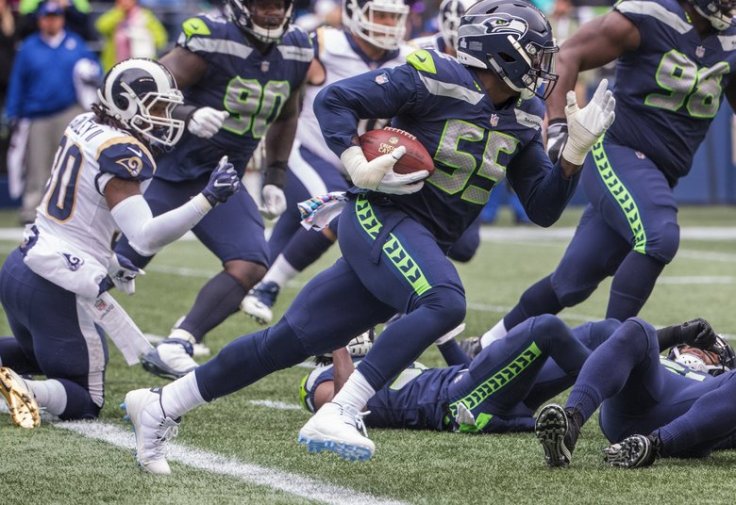
So let’s talk about standard personnel sets. Goff had a ton of success throwing out of them, gaining 9.36 yards per play. However even more impressively, that was the worst he threw the ball out of either of the 3 sets Los Angeles consistently used. They gained an even 10 yards per passing play over the 9 plays from a set with 4 receivers, and they gained 14.80 yards per passing play out of sets with 2 receivers 2 tight ends and a halfback. Those numbers are really high, but it’s not too surprising, Goff is averaging 10.40 yards per passing play on the season, which leads the league among starters, with the next closest to him being Matt Ryan with 8.75 (although worth mentioning Ryan Fitzpatrick technically leads the NFL with 10.51 yards per attempt, but I’m not including him since he is no longer a starter). Also I have to mention Gurley and the running game for the Rams, as they averaged 6.80 yards per rushing play out of a standard personnel set, which is really just insane.
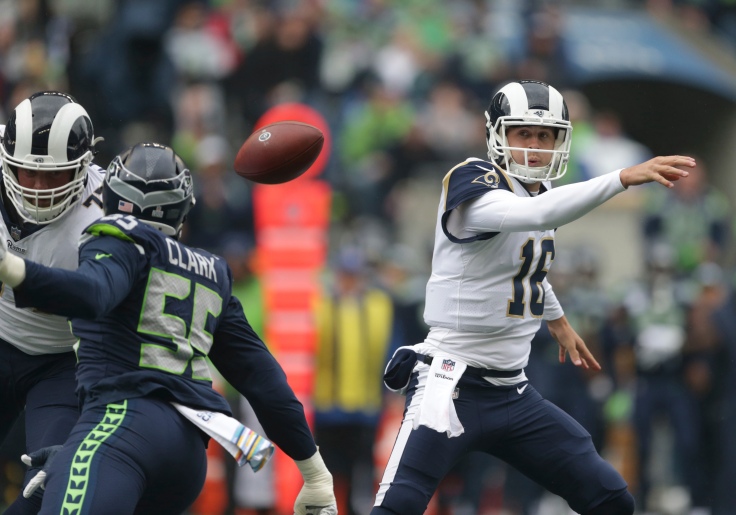
As for Seattle, they put up some impressive numbers of their own. Specifically out of standard personal sets. As crazy as the Rams rushing for 6.80 yards per play on standard personnel sets is, Seattle blew them out of the water, rushing for 9.39 yards per running play from those sets. They also averaged 10.73 yards per passing play from those sets, giving them an even 10 yards per play from those sets throughout the game, which was the highest overall yards per play from a personnel grouping from both teams on Sunday. As good as they were from those sets, they didn’t even come close to replicating that kind of success from any other set. They gained just 3.37 yards per rushing play from sets with 2 tight ends 2 receivers and a halfback. They passed from those sets twice, but did have a 39 yard gain from them, so there was that. Seattle also gained just 2.38 yards per play from 4 wide sets, so standard sets were by far their best personnel grouping of the day.
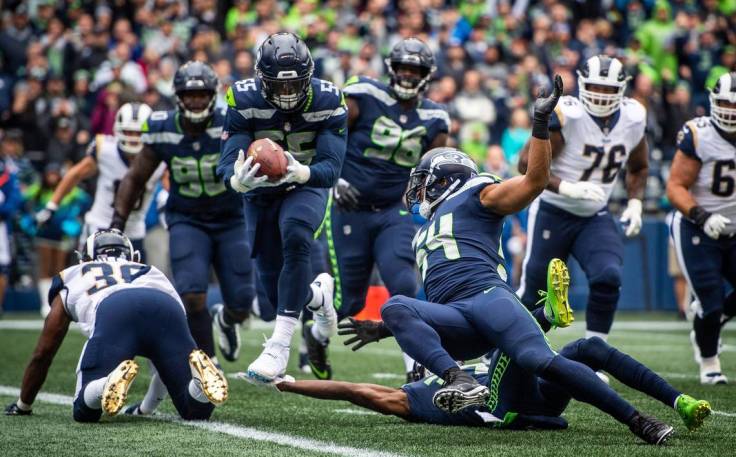
Well, I could talk about numbers all day, but there were a couple of interesting plays I want to talk about as well. The first of which happened when Seattle was as the Rams’ 32 yard line. There was 4:28 left in the game, and Seattle was down by 2. The Seahawks just need a field goal to take the lead, but they need to try and kill as much of the clock as possible. It’s not quite like a Falcons Super Bowl 51 situation, as Seattle wouldn’t have been up 2 scores, and couldn’t just run it 3 times, The Seahawks needed to try to kill all of the clock, so they had to try and get first downs. However all of that went out the window when they got flagged for a false start, and then 2 plays later there was holding that put them back another 10 yards. Seattle now needed some yards to get back in field goal range, but on their last 2 offensive plays of the game they ran 2 plays from a 4 wide set, which is a set they they had very little success from. I thought that was a questionable call, and it resulted in 2 incompletions, and a punt.
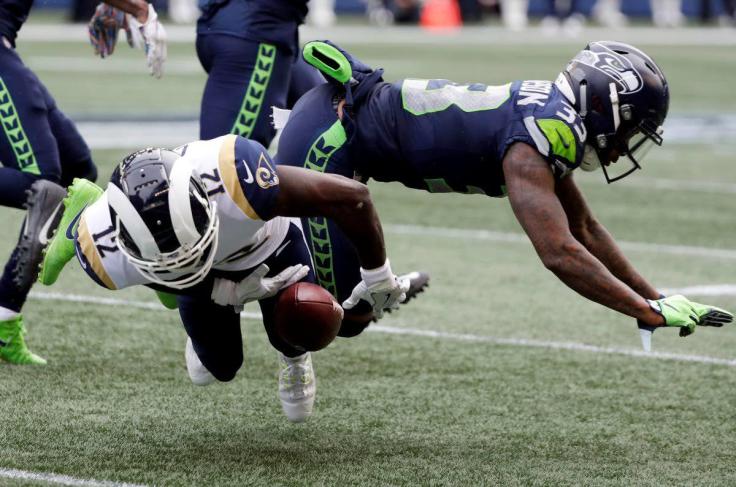
Speaking of punts, Los Angeles was lined up to punt on 4th and 1, which would’ve given Seattle a chance to get in position to kick a game winning field goal. However Pete Carroll called a timeout. I’m not really sure why he did that but it’s certainly regrettable in hindsight. Unless it was a fake, the Rams would’ve had to put since they had their punt team on the field and they had no timeouts left. However with the extra time to think about it, Los Angeles decided to run a quarterback sneak, and it worked out perfectly, improving the Rams to 5-0. While that might seem like a gutsy call, looking at the numbers it’s actually kind of a no brainer. Since 2016, running a quarterback sneak on 4th and 1 has worked 67 of 70 times, which is 95.7% of the time (credit to Scott Kacsmar for that stat). So you have to figure that if you punted the ball Seattle would’ve had greater than a 4.3% chance of getting into field goal range, making it a pretty easy decision (although we all know half the coaches in the NFL wouldn’t have done it).

Leave a comment